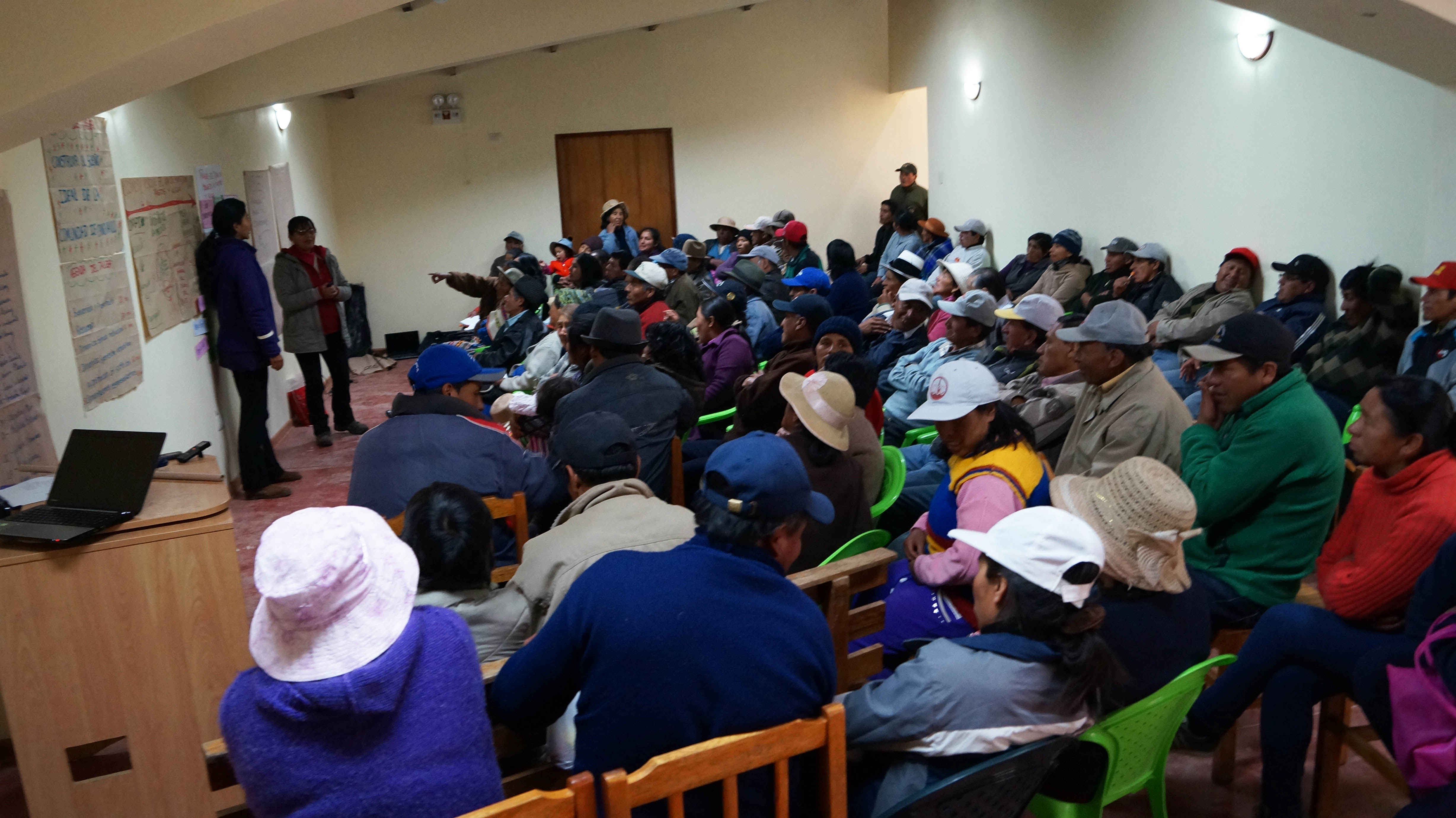


Under the component “Strengthening of Community Organization,” a management plan was developed to promote integrated management of pastures, water and livestock throughout the communal territory of Canchayllo. The goal was to strengthen community organization so that water could be distributed more effectively and grazing areas could benefit from improved rotation. The process to develop the management plan was facilitated by The Mountain Institute using a methodology to strengthen capacities, stimulating collective and social practices within the community. The plan is defined as a set of ideas that emerge from a given population by means of an in-depth process of analysis based on their own perspectives. The management plan can also serve as a tool for local management in the medium term.
According to the keen interest of this community, analysis and planning have focused on grasslands and water. The plan also encouraged the community to establish a committee to maintain and operate the renovated water infrastructure so that the water continues to flow and grasslands continue to be irrigated. In addition, a document with technical recommendations was developed for managing communal grasslands.
• Local and scientific knowledge exchange: participation and exchange among both local and external experts.
• Participatory approach and participatory action-research methodology.
• Commitment on the part of communal partners.
• Sound relationship and coordinated work between The Mountain Institute and the Nor Yauyos-Cochas Landscape Reserve/ Peruvian Service of Natural Protected Areas (SERNANP).
• Communication as a central component.
• Farmers’ interest.
• Steady support through a facilitator.
• A sound assessment of the social component is key in the diagnostic, including analyzing the current status but also past and present conflicts, as well as the tensions and tendencies. It’s also advisable to pay particular attention to existing activities incompatible with the EbA approach or other planned measures.
• Sufficient time is required to address the socio-economic, political and cultural dimensions in addition to the biophysical aspects (which often receive the most attention). Equally important are local governance, including mapping and analyzing past and present conflicts within the community, the direct dependence on ecosystem services and the type of management of the territory in the specific areas of the pre-selected measures.
• A good understanding of decision-making with regard to the management of resources in a specific area is key. This could be a community board, one or several families, an association within the community, etc.